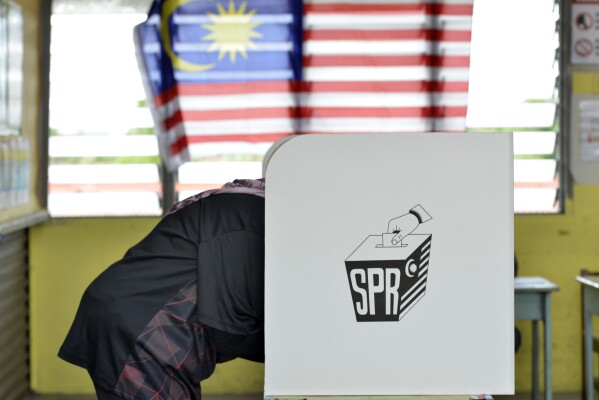Here Are 3 Simple Tips To Help You Spot The Difference Between Fake & Real News
With fake news becoming more rampant, it's important to be able to identify misinformation.
Did you know that there have been 655 reports of fake news as of July this year?
This figure is a huge increase from 2022, which recorded 658 fake news cases for the entire year. The drastic rise in fake news cases in 2023 has become a concern for the government.
Another major concern is that those under the age of 30 are most susceptible to fake news, according to the Misinformation Susceptibility Test, which involved 8,000 participants.
Universiti Teknologi Mara (UiTM) senior lecturer at the Centre of Media and Information Warfare Studies, Noor Nirwandy, said, "Some youths perceive being first to share news as a competition and they experience an adrenaline rush in doing so. It becomes a silent addiction to disseminate news that they believe must be shared."
He added that to avoid this, youths need to be more vigilant and aware of the consequences of spreading fake news.
This year, the Malaysians Communications and Multimedia Commission (MCMC) has taken extra steps in regulating digital content to curb fake news, especially during the lead up to the state elections that took place in August
MCMC held special meetings with social media service providers, including TikTok and Telegram, to tackle the matter.
"We had a meeting with TikTok at the end of last year and the beginning of this year and we just had a meeting with Telegram (on June 19).
"Good cooperation between the police, MCMC, and social media service providers is very important not only to curb defamation, but also to ensure that it (social media) is not misused," said Communications and Digital Minister Fahmi Fadzil, as quoted by New Straits Times.
However, curbing fake news should be a collective effort — both the government and Malaysians have an equally important role to play
Fake news spreads false information that can significantly mislead and manipulate public opinion. It's a threat to the integrity of information.
Noor added that fake news can threaten national security.
"Fake news can trigger panic and racial disharmony among citizens. It may be particularly dangerous when society departs from the national identity of the Federal Constitution and Rukun Negara, especially when there are extreme ideological shifts," said Noor.
That's why it's important for every Malaysian to be digitally literate and be able to discern the difference between fake and genuine news.
Most importantly, always remember to file a complaint whenever you spot a piece of fake news online. This allows MCMC to investigate the matter, remove the piece of fake news, and take stern action against whoever disseminated it.
In collaboration with MCMC, here are three tips to help you spot the difference between fake and genuine news:
1. Fact check the credibility of the news stories you received on sebenarnya.my
Sebenarnya.my is an information verification portal by the Communications and Multimedia Ministry and MCMC to help combat the spreading of false news.
Through the portal, you can determine if the piece of news you've read has been identified as fake news. In fact, sebenarnya.my updates a compilation of the latest fake news every few days.
Besides that, you can submit unauthenticated news items you've received on social media, messaging apps, and websites on the portal, to get them verified by official channels and relevant government agencies.
Other portals you can use for fact-checking are the Google News Initiative and factcheck.org.
2. Find out whether other news sites have covered it
An easy way to determine whether a piece of news is genuine or fake is by cross-checking it on other reputable news and media outlets.
If you do find the story on many other sites, then it is very likely to be genuine, as many major media outlets have strict editorial guidelines and extensive resources for fact-checking.
Even a quick Google search online should be able to tell you if the piece of news you've received is trustworthy.
3. Look up the author or journalist online
Living in a fast-paced digital industry, it's very common for Malaysians to read a news story without noting who wrote or published it.
Paying attention to the journalist or writer who wrote the piece of news is important, as it helps you determine the credibility of the article.
You can start by researching them to find out about their credibility, reputation, and existing works. If their article touches on a controversial topic, consider what the writer's motivation might be. Do they have a particular agenda for putting out such an article?
With fake news becoming more rampant this year, it pays to be vigilant about verifying information before sharing it with your friends and family
MCMC has shared that the main goal in addressing the issue of fake news is embracing the practice of verifying information.
In an effort to curb online harm, fake news, and online crimes, MCMC is working with various ministries and companies linked to suspected fake news.
On 4 July, it was reported that Meta would be working with the police and MCMC to curb online criminal activities.
Besides that, MCMC is continually enforcing regulations and guidelines that require media outlets to verify the accuracy of news stories that have been reported, monitor the spread of fake news across various media platforms, and encourage media literacy and critical thinking skills among the public.
Learn more about MCMC's efforts or report on a piece of news you believe to be inaccurate or misleading on their website






